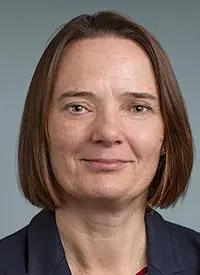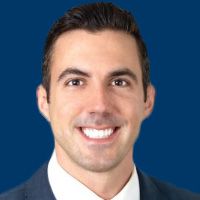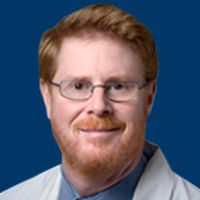Multiple Myeloma Call-to-Action Plan Seeks to Ignite Widespread, Patient-Focused Change
Faith E. Davies, MD, discusses the overarching goals of the Multiple Myeloma Call-to-Action, unmet needs that this plan seeks to alleviate, and ways in which all medical professionals could adopt these tenets into their practice to achieve global change in the care of patients with multiple myeloma.
Faith E. Davies, MD

Multidisciplinary and multifaceted collaboration and communication between hematologists, patients, patient advocates, and industry experts are necessary to drive changes across multiple myeloma care that align with the continued research and treatment advances in this field, according to Faith E. Davies, MD.
The global Multiple Myeloma Call-to-Action, a Janssen Oncology initiative, aims to advance the progress toward a cure for multiple myeloma by providing an outline of high-priority unmet needs in this patient population and recommend steps that the global multiple myeloma community could take to address these needs and improve patient care, outcomes, and experiences. The Call-to-Action is a collaborative effort that detail the prevalence of multiple myeloma around the world, outlines areas of unmet need, and implores people in the multiple myeloma community to continue to broaden their knowledge and drive change.
“These are hugely changing times,” Davies, chairperson of the Global Multiple Myeloma Collaboration Council, said. “To ensure patients benefit from all these incredible advances, we need to work as a team.”
In an interview with OncLive®, Davies discussed the overarching goals of the Multiple Myeloma Call-to-Action, unmet needs that this plan seeks to alleviate, and ways in which all medical professionals could adopt these tenets into their practice to achieve global change in the care of patients with multiple myeloma.
Davies is the director of the Center for Blood Cancers and the director of the Clinical Myeloma Program at the New York University Perlmutter Cancer Center.
OncLive: Could you describe the rationale for developing the Multiple Myeloma Call-to-Action and the goal of this program?
Davies: The goal of the global Multiple Myeloma Call-to-Action is to try to accelerate the progress to a cure. There have been so many advances in myeloma recently, and it’s important to take a step back and ask: How will we utilize those advances to reach a cure? [We wanted to] highlight some of the unmet needs for patients, try to advance the care and outcomes for patients, and, most importantly, inspire action amongst the myeloma community to reach that aim.
What are some of the biggest global disparities that need to be addressed for the treatment of patients with multiple myeloma?
We identified a few different unmet needs, which [include] a delay in timely diagnosis, the complexity of treatment decision making, the limited applicability of our clinical trial data, the diversity in our clinical trials, and an inconsistent holistic management approach. Globally, [identifying these needs is] important because each patient with myeloma is different, so the issues and problems they will have are different.
However, there is not only a difference in patients with myeloma; [there is also a] difference in the health-care systems, the accessibility to different therapies, the geographical struggles that patients may have, and the economic struggles that patients may have. Patients of different races are also affected differently by myeloma. There are many levels to the different factors that we need to think about on a global scale [for treating patients with multiple myeloma].
What efforts may improve clinical trial enrollment, access, and awareness to help these studies better reflect the global multiple myeloma population?
One area we highlighted was the need for clinical trials to represent our patients better on several different levels. Patients with myeloma as a whole may have poor kidney function or—because they’re in a slightly older patient population—may have issues with their heart or lungs. Many of those factors will often make them ineligible for clinical trials.
If we look back at some of the studies we’ve performed in the past, approximately 70% of the patients that we potentially see in our clinics would not be eligible for a clinical trial. On a purely practical basis, thinking about why and how we set our cutoffs for entry criteria is important.
Additionally, we need to think more on a global strategy. Clinical trials are often only offered at large centers, and they tend to be in cities, so many patients who may live in geographically remote locations may not have access to them. Also, we may not advertise those trials well or have the clinical trial information in appropriate languages for patients to understand. There are many different practical considerations that we have recognized and need to do moving forward to ensure that all patients have an opportunity to be involved in these studies.
What are some reasons why patients experience a delay in the diagnosis of multiple myeloma, and how could the timing of these diagnoses improve?
Another area we identified and highlighted was the delay in diagnosis. Many patients can go potentially 9 months to a year before they get to see the most appropriate doctor: the hematologist. That can be for several reasons. Patients may touch base with their general practitioner or primary care physician many times before the doctor thinks about [their disease] being myeloma. That’s mainly because many patients [with multiple myeloma], for instance, have back pain, and it’s unusual to have myeloma as an underlying reason for back pain. Also, patients will potentially touch base with their renal physicians, neurologists, or orthopedic surgeons. They can make their way to the hematology team in several different ways.
One of the issues we identified and recognized that we need to work on is an awareness campaign ensuring that primary care physicians and general practitioners think about a diagnosis [of multiple myeloma]. When patients present [with multiple myeloma], they [need to] have a definite pathway to meet the most appropriate team to look after them moving forward.
The second part of the call-to-action plan highlights key advances in multiple myeloma treatment. With the plethora of drugs available, how do you ensure treatment is being given appropriately and consistently in different practices?
The number of advances we have in myeloma treatment has been amazing. It’s a fantastic area for both physicians and patients at the moment. However, [this treatment landscape] brings about several difficulties in ensuring we choose the most appropriate treatment for each patient. To do that, there are some areas we need to work on.
One is ensuring that the medical community is up to date with the different potential treatments, their different adverse effects, and which patients may be most appropriate for which treatments. We also need to ensure our patients are up to date, and [we need to] move toward [a practice of] shared decision making. Many of the treatments can be oral or intravenous. Some include hospital stays and some don’t. Having shared discussions about the most appropriate way to treat patients will be important.
How can academic and community oncologists integrate the ideas in the Multiple Myeloma Call-to-Action into their practices?
An important part of this collaboration council and the call to action is the final part, which is inspiring action. Several initiatives are already ongoing. They are driven by patient advocacy groups or by different people with interest in myeloma, be that an academic interest or a pharmaceutical interest. Trying to ensure that all those resources are available to both doctors and [patients] is important.
Part of our action plan moving forward is to try to determine what is currently available and ensure people can access that. The next step in that process is then to ask: What are we missing? What else can we do? How can we make sure [this information] is spread so people can utilize it?
Doctors, nurses, health-care professionals, patients, advocacy groups, and different companies need to work together. By working together, we can make a massive difference.
Reference
Janssen Oncology. The multiple myeloma difference. Accessed September 29, 2023. https://mmcalltoaction.com/pdf/MMDifference.pdf



